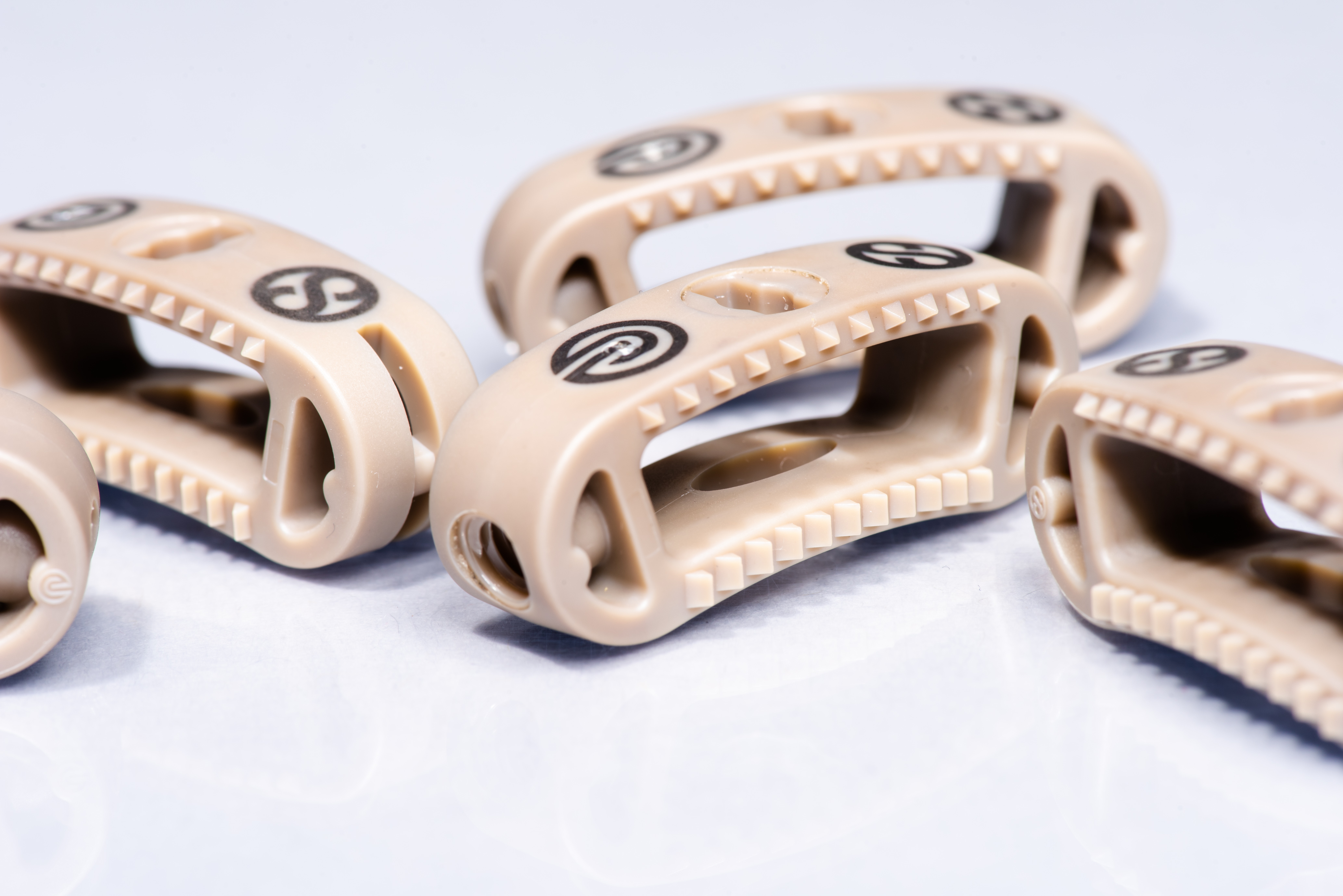
Specialty chemicals company Evonik and Swiss plastics specialist Samaplast have developed an osteoconductive polyetheretherketone (PEEK) biomaterial for injection molding.
According to the companies, it is tricky to make implants from polymer compounds with bioactive particles by injection molding, because a thin polymer layer usually forms on the surface that overlays the particles, preventing the implant from growing in. Using the new material means that the functional biphasic calcium phosphate (BCP)additives are also available on the surface of injection-molded components.
‘Implant manufacturers were missing a PEEK material that fuse with bone cells and thus accelerates healing, for example after spinal surgery,’ asid Marc Knebel, head of the medical systems at Evonik. ‘We are closing this gap in the market with Vestakeep Fusion and offering an alternative to titanium, stainless steel or cobalt-chromium implants.’ The material has been used to make prototypes of intervertebral implants, known as cages or spacers, which are used to fill the disc space in the spine following its removal due to disc degeneration. Specific cage variants can also be produced depending on the anatomical conditions and different surgical techniques used, the companies say. Evonik is also developing a filament that could be processed in additive manufacturing using fused filament fabrication (FFF) technology.
This story uses material from Evonik, with editorial changes made by Materials Today.
